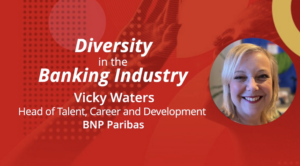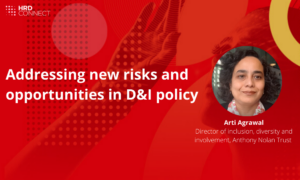Why the diversity conundrum is a result of management failings
- 6 Min Read
“Without executives willing to take the time to train and develop a diverse individual to grow into a role and progress in their career, the gap we currently have will continue to exist for many more years to come.” John-Claude Hesketh, Managing Partner, Marlin Hawk, examines the responsibility of management in improving diversity and inclusion.
- Author: John-Claude Hesketh
- Date published: Aug 30, 2019
- Categories

“Please make sure we have a diverse shortlist” is now the phrase heard by every executive search partner in the world. Over the past couple of years, search firms have been increasingly tasked with presenting clients with what they would define as a diverse shortlist.
Historically this simply meant including female candidates on the shortlist, but has now evolved to include BAME, LGBTQ+ candidates, amongst other diversity measures. The fact that companies are now holding themselves to higher hiring standards when it comes to building diverse teams is encouraging, but in reality, there are a number of hurdles yet to be crossed and most of them begin internally.
Search firms are not the reason for continued lack of diversity at the top table, despite the industry’s efforts to shift the dial by presenting diverse talent. I believe it is in management teams in organisations across the world where the best laid plans to increase diversity in senior teams go awry.
Internal leadership teams must take real action rather than rest on the various initiatives, pledges and promises that look great on paper but are rarely given the time, space or resources to come to fruition.
I’ve been fortunate to partner with some of the world’s leading organisations and most inspiring leaders, and without exception they have all placed diversity – be that of gender, ethnicity or thought – at the top of their agenda when looking at hiring a new executive. This focus and desire to redress the balance is something we should all be supportive of and it is great to see the tide starting to change, however slowly.
But it will continue to be slow as, in reality, the pool of diverse leadership is small globally. Such sought-after leaders are not plentiful and organisations have as big an obligation to develop the new generation of diverse leaders themselves rather than trying to hire them from their competitors.
The issue is, no-one has the time or inclination to train and develop a rising star.
Correction, very few people prioritise this ahead of the million and one other things to do on their to do lists. Why? Because management is tough. Management requires professionals with goals of their own to think of others as much as themselves. Most businesses are actually hard pressed to find more than a handful of managers like this who are willing to put aside time each day to make sure their team excels personally as well as professionally.
Without executives willing to take the time to train and develop a diverse individual to grow into a role and progress in their career, the gap we currently have will continue to exist for many more years to come.
Pick and polish the hidden gems
Too often I’ve seen ‘managers’ who choose to fill a vacated role with a fresh new candidate – whether internal or external – who has ‘done the job before’. The reasoning? Because ‘they just need someone to get the job done’. It might seem like a logical step that is critical and necessary in some situations, but not in all.
If managers are not willing to give someone a stretch role based solely on the fear that they aren’t perfect and they might have to be on hand to offer advice and develop said person, then are they truly exercising their managerial skills? Some of the brightest candidates for a given role can come from the most unexpected places, but without the opportunity and the support to launch into what could be the career they excel at, that potential is lost.
At Marlin Hawk, for example, we recently placed the CTO of a major global computer technology company into a prominent US airline – a leap across sectors that likely neither the candidate or client considered viable, but has turned out to be a very successful placement. This candidate was given a chance and the backing to shine in a new environment and, so far, they have not disappointed.
If companies truly want to change their diversity mix at the top table, managers must take action by actively seeking out the most promising underdogs, encouraging them and equipping them to reach their full potential. They must put the time and effort into managing, coaching and leading the rising stars that the industry now has at its fingertips.
The importance of collaboration and talent pooling
The conundrum doesn’t just stop at what a single company can do internally. Diversity in leadership is a global and collective issue that could be solved by having more of a collaborative approach to talent strategies.
Companies engaging in return to work schemes and flexible working arrangements, for example, are helping to change the perceptions of work for many people in society, and this is truly encouraging. A possible next step is for those companies to partner with one another on a shared back-to-work scheme.
Sharing talent is a radical idea in most sectors, but it would ensure underrepresented groups such as returning mothers have the best shot at continuing to build their best possible careers when they come back into the workplace. The number of female professionals landing senior leadership positions is already sparse, with only 5% of CEO roles of S&P 500 companies filled by women, and the pipeline of ‘rising stars’ waiting to take their place just as thin.
This talent-pooling approach could give those numbers a much-needed boost while also having the knock-on effect of creating a network of talented leaders who can then foster an industry-wide culture of mentoring and collaboration, giving rise to a new wave of managers who understand the value of helping other leaders climb the ladder.
Returning to the bigger picture, can my industry do more to help increase diversity – not just in gender but in race and ethnicity, age, experience, thought and more? Absolutely. And from what I’ve seen, headhunters are doing everything we can to aid this effort. But ultimately, there is a finite number of candidates to work with at the best of times. Adding diversity into the requirements means that number becomes even smaller.
It is, of course, our job to root out the best talent for each role, but we can only then move the big fish around the world, not change the size of the pool from which they came. That is the job of our clients. That is the job of their managers. And we need more good managers, mentors and people developers if we want that pool to widen.









